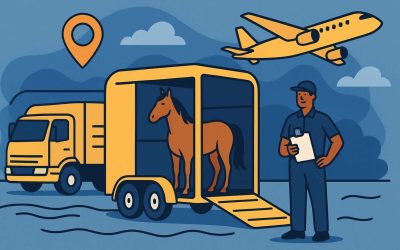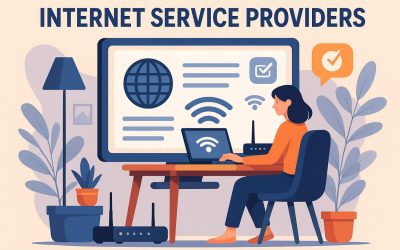Mobile tour management is an exciting method that’s becoming more popular. This approach lets companies bring their products and experiences directly to consumers, creating memorable interactions that can boost brand loyalty, drive sales, and leave lasting impressions. By taking their brand on the road, businesses can reach new markets, engage with customers in unique settings, and create excitement that goes beyond traditional marketing.
Why mobile tour management matters
Mobile tours let brands do something pretty powerful, they can pack up their best stuff and meet people where they actually are. Instead of hoping customers find their way to a store, brands can pop up at festivals, parks, or busy streets where their target audience hangs out. It’s marketing that doesn’t feel like marketing because people get to touch, try, and experience products in person. When you bring your brand to someone’s neighborhood or favorite event, you’re not just selling something – you’re becoming part of their community and creating memories they’ll talk about later.
When done well, mobile tours can have many benefits:
- Increase brand awareness by creating a physical presence in different places
- Let people try products in person, giving an experience that online shopping can’t
- Create buzz on social media, reaching more people beyond the tour locations
- Gather customer feedback right away, helping improve products and marketing
- Generate sales opportunities through direct interactions with consumers
- Build brand loyalty through fun, memorable experiences
Experiential marketing like this can really change how consumers see and interact with a brand. For example, a skincare brand might set up a mobile spa where people can get free mini-facials and skin advice. This hands-on experience is much more memorable than just seeing an ad or looking at a website. It lets consumers use the product, talk to knowledgeable brand representatives, and see the benefits for themselves – all of which help create a stronger connection to the brand.
Key elements of a successful mobile tour
To make your mobile tour a big success, careful planning and attention to detail are really important. Here are some key things to think about when planning your mobile tour:
Choose the right vehicle
Picking the right vehicle for your tour is crucial – it’s your brand on wheels, after all. The choice really depends on what you’re promoting and who you want to reach. Food trucks work great for samples and demos, glass-sided trucks create instant showrooms for fashion or tech, custom trailers give you space for full brand experiences, and buses or RVs offer flexible spaces that adapt to different needs. Pop-up tents and inflatables are perfect when you need something super portable.
Look at beauty brands using glass trucks as mobile skincare studios – people walking by can see treatments happening inside, which builds trust and creates buzz. It’s like a live commercial playing out on the street.
Pick the perfect locations
The success of your tour depends on bringing your brand to places where your target customers naturally go. Carefully research and choose locations that fit with your brand identity and marketing goals. Consider options like:
Popular shopping areas and retail districts with lots of people walking around. Festivals, concerts, and community events that attract the kind of people you want to reach. College campuses to connect with younger consumers. Business districts to reach professionals during lunch breaks or after work. Beaches or parks during summer for lifestyle brands. Sports events or tailgating areas for brands with connections to athletics. Trade shows and industry conferences for tours focused on business-to-business connections.
Create engaging experiences
The most important part of a successful mobile tour is giving visitors fun, memorable experiences that match your brand values and what you’re selling. Think beyond just showing products and consider how you can create meaningful interactions that people will remember. Some ideas include:
Interactive product demonstrations that let people try things out themselves. Free samples or mini-services to give a taste of what you offer. Photo opportunities with branded backgrounds or props for people to share on social media. Games or contests that teach about your products while being fun. Virtual reality experiences that show off your brand in new and exciting ways. Live performances or celebrity appearances to draw crowds and create excitement. Educational workshops or talks related to your industry or products. Personalized consultations or fittings to give tailored recommendations.
Planning your mobile tour
Good planning is the foundation of a successful mobile tour. By spending time and resources on thorough preparation, you can reduce risks, make the most of opportunities, and ensure your brand experience goes smoothly. Here are some important steps to follow when planning your mobile tour:
Set clear goals
Before getting into the details, it’s important to set specific, measurable goals for your tour. These goals will help guide your decisions and let you see how successful your campaign was. Think about setting targets for things like:
Increasing brand awareness in specific areas or among certain groups of people. Getting a certain number of potential sales leads. Achieving a target number of product trials or samples given out. Creating social media buzz with a specific number of mentions or hashtag uses. Collecting a certain amount of customer data or feedback. Bringing more people into nearby stores. Launching a new product with a target number of early users.
Know your budget
Mobile tours can cost a lot, so it’s important to plan your costs carefully and use your resources wisely. Make a detailed budget that includes all parts of the tour, such as:
Renting or buying a vehicle, including customizing it and adding your brand. Wages for brand representatives, drivers, and support staff. Product samples and promotional items. Marketing materials, both digital and print. Permits, licenses, and insurance for each tour location. Travel expenses, including fuel, places to stay, and meals for staff. Technology and equipment costs for interactive experiences. Extra money for unexpected expenses or opportunities.
Create a timeline
Make a detailed schedule that outlines each part of your mobile tour, from the initial idea to analyzing the results after the tour. This timeline will help keep your team on track and make sure all necessary tasks are done on time. Include important milestones like:
Coming up with the concept and strategy. Designing and building your mobile unit, allowing time for possible delays. Hiring and training staff to represent your brand well. Creating and running marketing campaigns before the tour. Getting necessary permits and partnerships for each tour stop. The actual tour dates, including travel time between locations. Follow-up activities and data analysis after the tour. Meetings to gather insights and plan future improvements.
- Set clear goals: Define objectives like increasing brand awareness, generating leads, product sampling, or building social media buzz.
- Define your budget: Plan costs for vehicle, staff, samples, marketing materials, permits, and insurance.
- Create a timeline: Schedule design, build, training, marketing, tour dates, and follow-up activities
Making the most of your mobile tour
To get the best results from your mobile tour, try using these helpful tips and best practices:
Use social media
Use social media to spread the word about your tour and get more people involved. Make a social media plan that includes:
Creating a unique, catchy hashtag for your tour. Promoting your tour stops on platforms like Instagram, Twitter, and Facebook. Encouraging visitors to share photos and experiences using your branded hashtag. Offering rewards for social media engagement, like special discounts or prizes. Teaming up with local influencers to get more attention in each tour location. Using live streaming to show exciting moments and attract virtual participants.
Collect data
Take advantage of talking directly to consumers to gather valuable information that can help with future marketing and product development. Consider using:
Short surveys or feedback forms to get customer opinions and preferences. Digital sign-up forms to grow your email marketing list. QR codes that link to more detailed questionnaires or product information. Interactive kiosks that collect data while providing a fun experience for visitors. Loyalty program sign-ups to encourage repeat engagement.
Follow up
The end of your tour is just the beginning of building lasting relationships with the people you’ve met. Make a plan to follow up that includes:
Sending personalized thank-you emails to attendees. Offering special promotions or discounts to encourage first-time purchases. Sharing additional product information or educational content related to their interests. Inviting participants to join online communities or VIP programs. Asking for reviews or testimonials from satisfied customers.
Measure your success
To see how well your mobile tour worked and justify future investments, track important metrics such as:
Total number of visitors and engagement rates at each location. Sales figures, including both on-site purchases and related online sales. Social media metrics, including reach, engagement, and sentiment analysis. Number and quality of sales leads obtained. Increase in brand awareness in tour locations, measured through surveys or social media listening. Return on investment (ROI) calculations comparing tour costs to generated revenue and brand value.
Conclusion
Mobile tours let you bring your brand right to your customers, creating real connections in a world that’s mostly gone digital. It’s not just about showing up, it’s about creating experiences people will remember and talk about later. The trick is to give your audience something genuinely worthwhile, whether that’s trying your products in a fun way or learning something new.
Before you hit the road, nail down your goals and plan the details carefully. But stay flexible – the best tours adapt based on what’s working and what people are actually excited about. When done right, mobile tours don’t just boost sales – they turn curious onlookers into loyal fans who feel personally connected to your brand.
More must-read stories from Enterprise League:
- Unique ways to show your employees you care about them.
- Motivating business role models to inspire your entrepreneurial spirit.
- Proven and tested psychological tactics for successful marketing.
- Get inspired from this list of creative small business ideas.
- Profitable online education business ideas that you should be aware of.
Related Articles
What Companies Offer Horse Transportation Services? 5 Options to Review
Transporting a horse involves more than simply loading it into a trailer. When the stakes include international regulations, health certifications, quarantine rules, shipment timing and an animal's well-being, the process becomes a complex logistical project. If you...
Financial and Fintech Software Development Companies to Consider
Financial and fintech software development is crucial for organizations wanting to remain competitive in an increasingly digital marketplace. Leaders and decision-makers must be able to understand complex regulatory requirements while meeting the growing expectations...
Internet Service Providers: What You Need to Know
You need a fast connection for streaming shows, working from home and playing video games, so finding the right internet company is essential. The crowded market of providers includes promises of good deals and unrestricted connections. What are the top...
What Companies Offer Horse Transportation Services? 5 Options to Review
Transporting a horse involves more than simply loading it into a trailer. When the stakes include international regulations, health certifications, quarantine rules, shipment timing and an animal's well-being, the process becomes a complex logistical project. If you...
Financial and Fintech Software Development Companies to Consider
Financial and fintech software development is crucial for organizations wanting to remain competitive in an increasingly digital marketplace. Leaders and decision-makers must be able to understand complex regulatory requirements while meeting the growing expectations...






